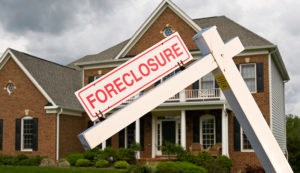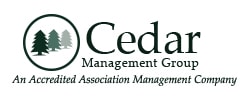What is the difference between HOA bylaws and covenants? Many people incorrectly use these terms interchangeably, and even those who are no strangers to HOA living sometimes get them confused. The difference, though, is night and day.
What Are HOA Bylaws?
What are bylaws in an HOA? Simply put, homeowners association bylaws dictate how an HOA should run. Since HOAs are considered corporations under law, albeit non-profit, they require bylaws to govern day-to-day operations. HOA bylaws are also sometimes referred to as neighborhood association bylaws or subdivision bylaws.
Are HOA bylaws enforceable? Yes, homeowners association bylaws are generally legally binding and enforceable. Typical provisions found in homeowner association bylaws include:
- Frequency of board meetings
- Meeting and quorum requirements
- Frequency of board elections
- Board nomination and election procedures
- Number of board members that can serve at a given time
- Duration of board member service
- Board member duties and responsibilities
- Membership voting rights
HOA Bylaws vs State Law: Which One Wins?
Even though an association’s bylaws tell the HOA how to operate things, they generally do not trump the laws of the land. This includes constitutional, federal, and state laws. For example, if the HOA bylaws require 50 percent of the membership present to meet a quorum but state laws say otherwise, the latter takes precedence.
On occasion, state laws say, “Unless otherwise stated in the association documents…” or other similar languages. In that case, whatever provisions exist within the HOA bylaws take precedence.
What Are CC&Rs?
 What does CC&Rs stand for? CC&Rs stand for the Declaration of Covenants, Conditions, and Restrictions. Homeowners association CC&Rs are, in essence, the rules of a community.
What does CC&Rs stand for? CC&Rs stand for the Declaration of Covenants, Conditions, and Restrictions. Homeowners association CC&Rs are, in essence, the rules of a community.
They describe the HOA’s obligations and rights to its members and vice versa. They are often referred to as homeowner association covenants or simply covenants.
An association’s CC&Rs are recorded and filed officially with the state. Much like HOA bylaws, the provisions within the HOA CC&R are legally binding and enforceable. Common HOA covenants and restrictions can include the following:
- Property-use restrictions
- Deed restrictions or restrictive covenants (such as architectural restrictions, pet restrictions, vehicle restrictions, etc.)
- Rule enforcement procedures and penalties
- Dues and assessment obligations
- The HOA’s maintenance obligations
- Individual members’ property maintenance obligations
- Insurance obligations
- Dispute resolution processes
How long do covenants last? Crazy as it seems, HOA covenants do expire in many states, lasting only 30 years. Beyond that, covenants can become unenforceable. Associations can essentially undo this, though, with the help of covenant revitalization. This process requires a majority vote from the membership and approval from state or local governments.
CC&Rs vs HOA Rules and Regulations: What’s the Difference?
An association’s CC&Rs shares many similarities with Rules and Regulations. Basically, though, the HOA’s Rules and Regulations are operating rules that are not included within the HOA bylaws or CC&Rs. Such rules are easier to change than covenants, as the former usually only requires a membership review and a vote from the board.
Rules and Regulations can vary wildly from association to association. A rule from one HOA might not be a covenant for another.
Who Enforces HOA Bylaws, CC&Rs, and Rules?
The burden of enforcing the association’s bylaws, covenants, and rules lies with the HOA board. In some HOAs, the board delegates enforcement tasks to committees.
For instance, the Architectural Review Committee oversees all architectural changes. This committee typically approves or denies requests according to the association’s CC&Rs. The ARC may also conduct compliance inspections of the neighborhood. A Covenants Committee, on the other hand, helps the board enforce covenants and ensure compliance.
HOA Bylaws vs Covenants: Making Amendments
A homeowners association typically enacts its bylaws and CC&Rs upon incorporation. Usually, the developer of the planned community carries out this task. But, there is only so much a developer can plan for. Over time, as the community grows and evolves, the need for new bylaws and covenants will become apparent.
Both an association’s bylaws and its covenants can be amended, though the process usually takes time. If an HOA needs to make any changes to its CC&Rs (including adding a new covenant), it will need to obtain a majority vote from the members of the community.
How do I amend HOA bylaws? Similar to covenants, amending HOA bylaws is a time-consuming process that typically requires a vote from homeowners to pass. Both processes usually take around 2 to 4 weeks to complete and can cost the association money in the form of attorney’s fees.
CC&Rs vs HOA Bylaws: Violations
 Since bylaws and covenants are, essentially, guidelines and rules, it is possible to breach them. The consequences, though, are usually different.
Since bylaws and covenants are, essentially, guidelines and rules, it is possible to breach them. The consequences, though, are usually different.
For violating the CC&Rs, homeowners can face a variety of penalties. Not all associations adopt the same penalties, but one can generally find the following within most HOAs’ governing documents:
- Fines. The association may impose a fine against a homeowner who violates a covenant.
- Suspensions. A violator may have their privileges revoked, usually in the form of suspending access to community amenities.
- Forced Compliance. The HOA may enter the homeowner’s property to remedy the problem in question and then ask the homeowner to pay for the repairs.
- Liens and Foreclosures. In some states, if a homeowner has become delinquent, the association may attach a lien to their property. They can subsequently initiate foreclosure in an attempt to collect payment.
What if HOA does not follow bylaws? If the board is not complying with its bylaws, homeowners can bring the matter to the board’s attention. Homeowners can also call for a special meeting, as stipulated in the governing documents, to remove board members from their position. In some cases, homeowners can even sue the HOA for failure to follow the bylaws.
Unenforceable HOA Rules
In general, HOA covenants, rules, and bylaws are legally enforceable. There are some instances, though, where this directive does not apply. Unenforceable rules can come in many forms such as:
- Procedurally Incorrect Enactment. Associations must follow correct procedures when amending their bylaws, covenants, and rules. When they fail to adhere to such procedures, the rule enacted may be challenged and unenforceable.
- Conflicts With the Law. No association bylaw, covenant, or rule can breach homeowner rights or violate the law. For instance, the HOA may not ban members of a certain religion from entering the pool as that would be discrimination and in direct violation of the Fair Housing Act.
- HOA Holds No Authority. If the association does not have the power to act on a bylaw, covenant, or rule, then it is considered unenforceable. For example, they may not regulate a particular property if it does not belong in the HOA.
- Selective Enforcement. Homeowners can challenge the validity of a bylaw, covenant, or rule if it is enforced inconsistently or selectively. Board members also open themselves up to liability when they practice selective or arbitrary enforcement.
How to Get HOA Documents
Are HOA bylaws public records? Bylaws and CC&Rs are both part of an association’s governing documents. As such, board members should make these homeowners association documents freely available to members of the community.
Typically, the association provides a copy of the governing documents to new homeowners as part of a welcome packet. This way, new residents can familiarize themselves with the rules that govern the community.
If a homeowner wishes to review the HOA bylaws or CC&Rs, they can formally request a copy of these records from the board. Associations may also want to upload the governing documents to their HOA website if they have one. This makes it easy for homeowners to access these records without needing to go through the board.
Professional Assistance May Be Necessary
 It is imperative for all residents of an association, board member or not, to understand their HOA bylaws and CC&Rs. In doing so, they can acquaint themselves with the different regulations and guidelines that govern their community.
It is imperative for all residents of an association, board member or not, to understand their HOA bylaws and CC&Rs. In doing so, they can acquaint themselves with the different regulations and guidelines that govern their community.
From there, they can better understand how their association should operate, how to amend the bylaws and covenants, what they can and can’t do, and any penalties associated.
With so many governing documents to keep track of, many associations have a hard time implementing and enforcing all the provisions therein. An HOA management company like Cedar Management Group, though, can assist you with community management, covenant enforcement, and more. Call us today at (877) 252-3327 or email us at help@mycmg.com for more information.
RELATED ARTICLES:
- What Are The HOA Governing Documents You Need As A Homeowner?
- 4 Steps On How Can Enforce HOA Rules
- HOA Foreclosure: Can An HOA Foreclose Your Home?






